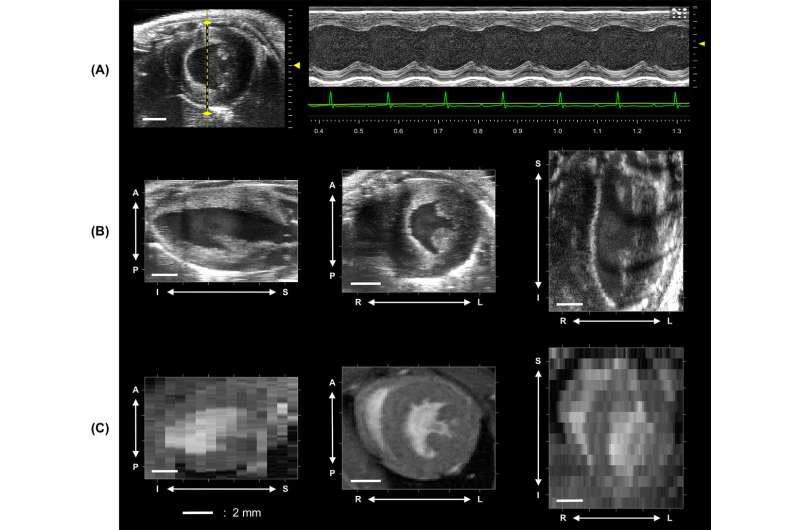The power of 4-D technology advances care for heart patients

A tool that has been around for decades shows new promise in helping people with heart disease. A new study published in the Annals of Internal Medicine finds that adding ultrasound imaging during the doctor's assessment of cardiac function could help improve diagnoses and treatments.
These findings come while Purdue University heart imaging researchers are also developing novel strategies to study cardiovascular disease with 4-D ultrasound—using 3-D space and time. While recent advancements have made 4-D ultrasound available to the clinic, the information extracted for patient care remains similar to that provided by its conventional usage as a 2-D imaging technique.
Researchers at Purdue are working to extract more comprehensive information from the 4-D data that will not only allow better understanding of cardiovascular disease, but also identify improved metrics that can enhance patient care.
"Our technology helps speed up assessment time and also provide additional information that conventional methods cannot," said Craig Goergen, the Leslie A. Geddes Associate Professor of Biomedical Engineering in Purdue's College of Engineering and principal investigator for the Cardiovascular Imaging Research Laboratory. "We think it could eventually help improve our understanding of disease progression and help in developing novel therapeutics."
Goergen said the Purdue 4-D-ultrasound technology automates the acquisition, reconstruction, reorientation and segmentation methods needed to quantify cardiac function and vascular kinematics. A doctor could then examine 4-D detailed images of the heart, vessels or other areas of interest. A video showing a 4-D image of a heart from Fujifilm VisualSonics Inc. and Goergen is available here.
"The only way to do this previously was to acquire individual images or movies and then reconstruct all the data with computationally intensive techniques," Goergen said. "Our approach saves many of these steps and helps streamline the process, while also providing useful information that may detect disease initiation at early stages."


















